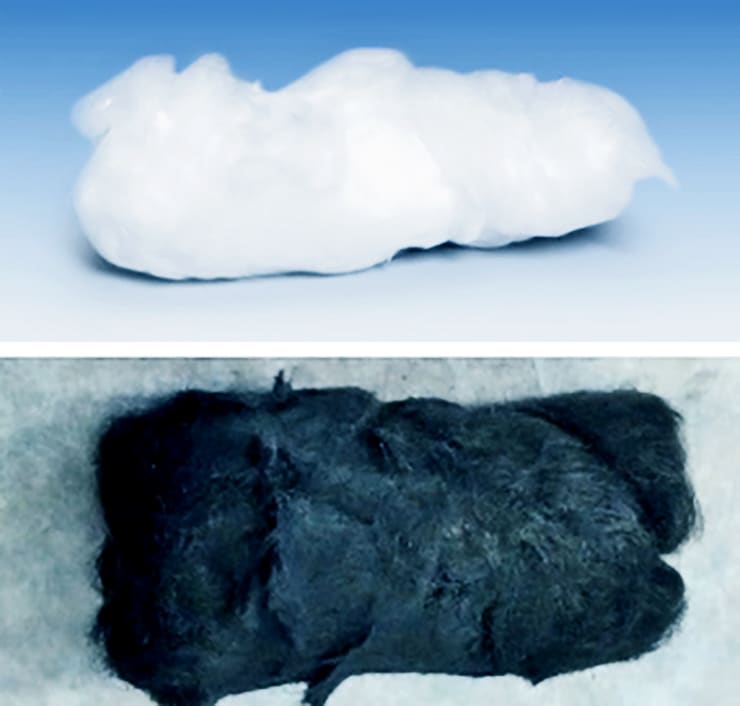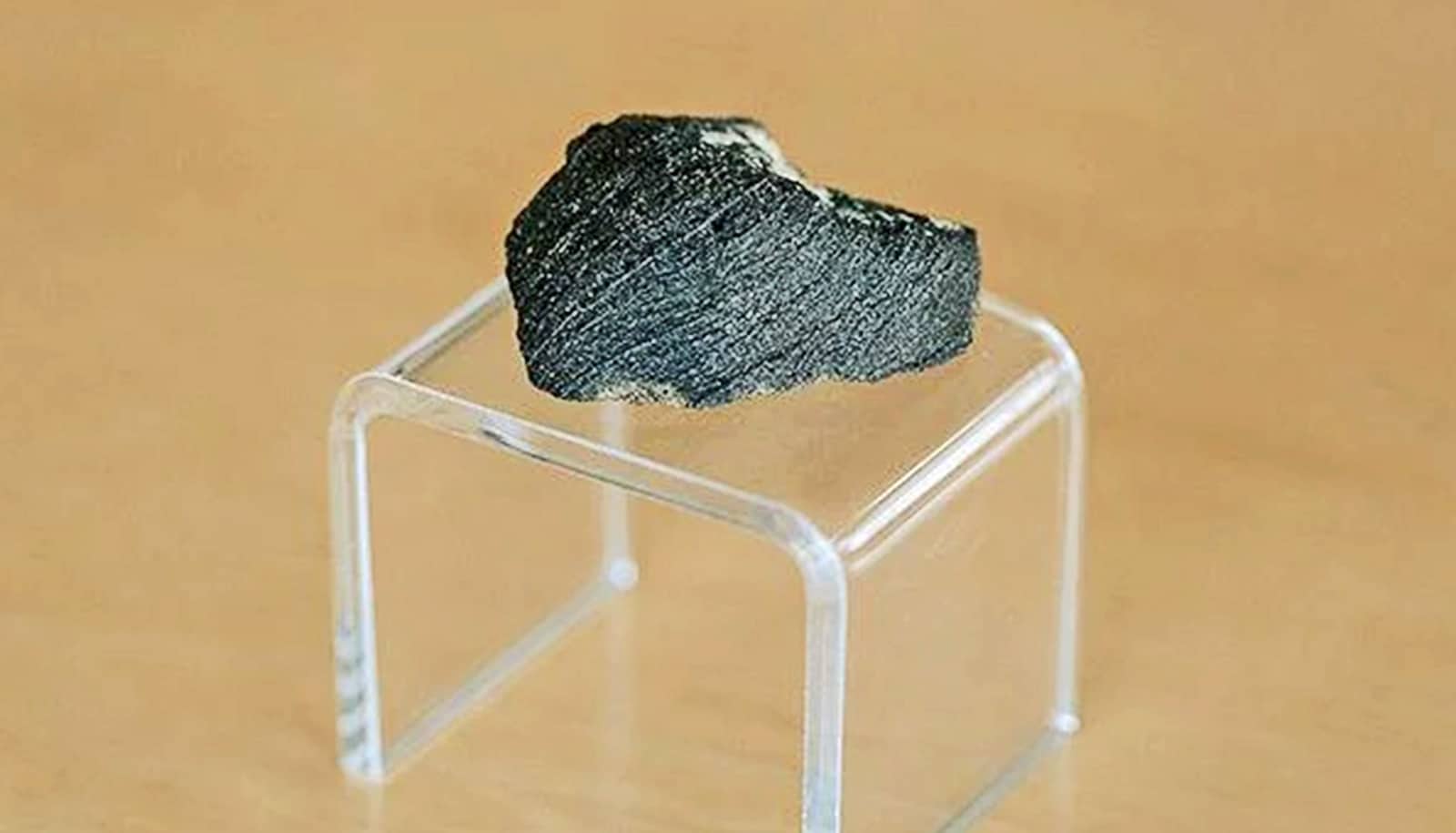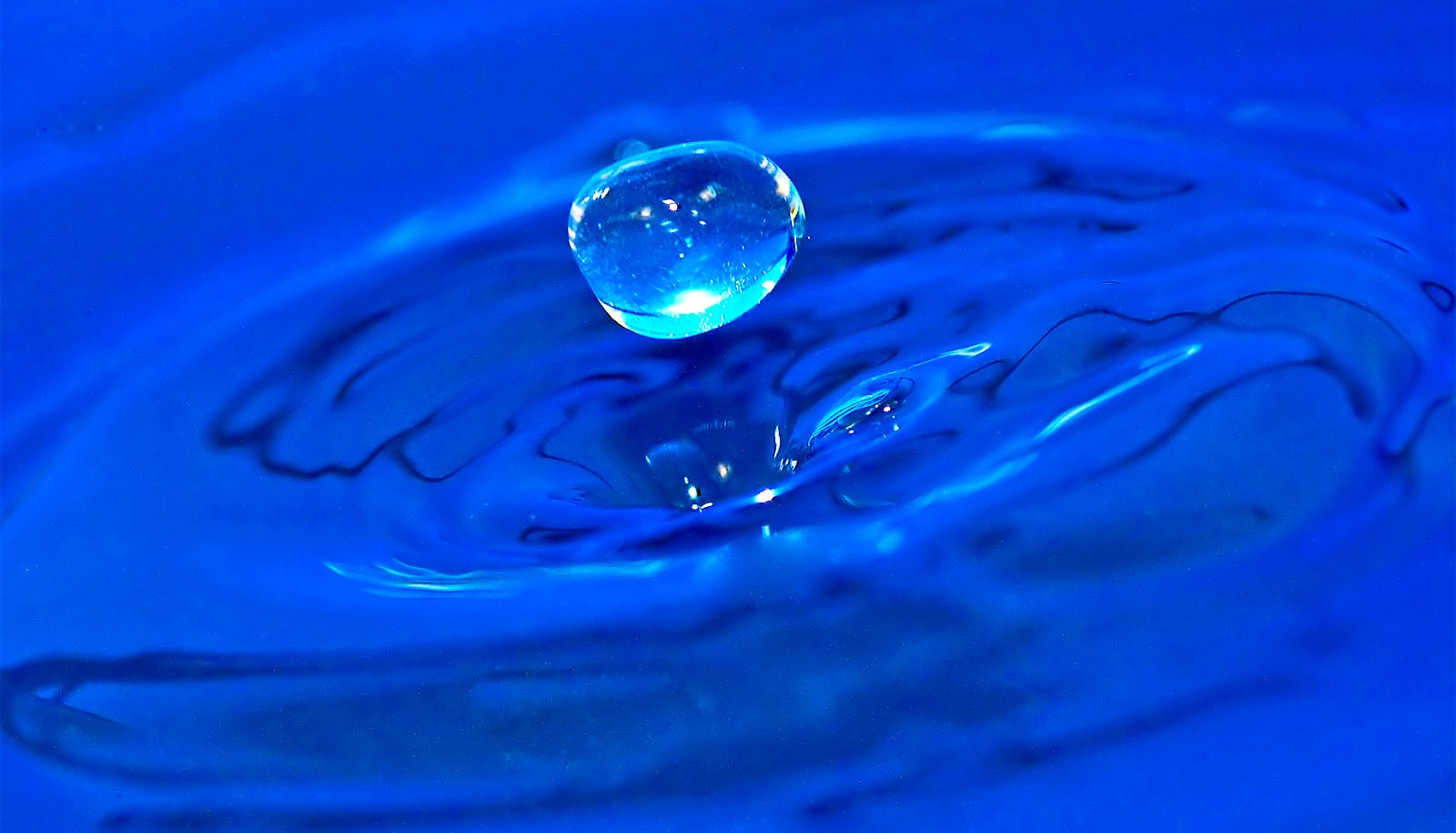Researchers have created a filter comprised of carbon nanotubes immobilized in a tuft of quartz fiber that can remove toxic heavy metals from water.
The researchers have shown that the new filters absorb more than 99 percent of metals from samples laden with cadmium, cobalt, copper, mercury, nickel, and lead. Once saturated, the filters can be washed with a mild household chemical like vinegar and reused.

One gram of the material could treat 83,000 liters of contaminated water to meet World Health Organization standards—enough to supply the daily needs of 11,000 people.
The robust filters are made of carbon nanotubes grown in place on quartz fibers that are then chemically epoxidized. Lab tests showed that scaled-up versions of the “supported-epoxidized carbon nanotube” (SENT) filters were able to treat 5 liters of water in less than one minute and be renewed in 90 seconds.
The material retained nearly 100 percent of its capacity to filter water for up to 70 liters per 100 grams of SENT, after which the metals contained could be extracted for reuse or turned into a solid for safe disposal.
“This would make the biggest social impact on village-scale units that could treat water in remote, developing regions.”
While the quartz substrate gives the filter form and the carbon nanotube sheath makes it tough, the epoxidation via an oxidizing acid appears to be most responsible for adsorbing the metal, researchers determined.
Lead author Perry Alagappan came up with the idea as a high school student. He was inspired to start the project during a trip to India, where he learned about contamination of groundwater from the tons of electronic waste—phones, computers, and the like—that ends up in landfills.
“Perry contacted me wanting to gain experience in laboratory research,” says Andrew Barron, professor of chemistry and of materials science and nanoengineering at Rice University. “Since we had an ongoing project started by Jessica Heimann, an undergraduate who was taking a semester at Jacobs University Bremen, this was a perfect match.”
The raw materials for the filter are inexpensive and conversion of acetic acid to vinegar is ubiquitous around the globe, which should simplify the process of recycling the filters for reuse even in remote locations.
“Every culture on the planet knows how to make vinegar,” Barron says.
Foam filter uses biofilm to clean water
“This would make the biggest social impact on village-scale units that could treat water in remote, developing regions. However, there is also the potential to scale up metal extraction, in particular from mine wastewater.”
The study covering the filter appears in the journal Scientific Reports. The Robert A. Welch Foundation, the Welsh Government Sêr Cymru Programme, and the United Kingdom’s Engineering and Physical Sciences Research Council funded the work.
Source: Rice University



